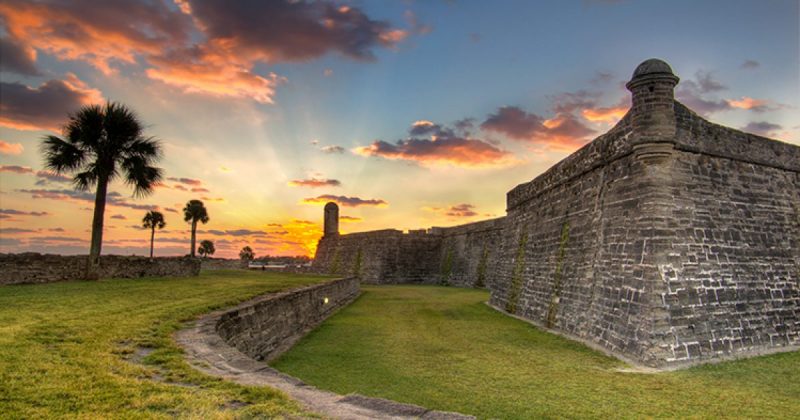The Origin of American Myth
The first permanent European settlement in America was NOT in Plymouth, Mass. (1620), or in Jamestown, Virginia (1607).
Spanish explorers settled St. Augustine, Florida in 1565, nearly 50-years before English settlers arrived at Jamestown. And French navigators had explored coastal Canada since 1529, before establishing the first permanent settlement in Quebec in 1608. English settlements were built of wood and were primitive compared to the stone and masonry structures of the French and Spanish. (Photo)
Santa Fe, New Mexico was founded in 1610, by Spaniards who had already discovered, conquered and settled present-day Mexico from Vera Cruz, to Mexico City and then proceeded 1500 miles across the mountains and desert to the foothills of the Nuevo Mexico’s Sangre de Cristo mountains.
Between 1672 and 1695, the Spanish built Castillo de San Marcos, the oldest masonry fort in the United States, to defend the colony of St. Augustine. The Spanish eventually ceded the colonies of East Florida and West Florida to Britain in 1763, but these colonies remained loyal to Britain and were, thus, ignored during the American Revolution.
Spain eventually reclaimed their former colonies until they joined the United States. The Republic of West Florida was annexed in 1810 and East Florida was ceded by treaty in 1821. Hence, it’s more accurate to recall that 13 of 15 colonies rebelled and 2 remained loyal to the Crown. (But this is never mentioned.)
Meanwhile, Spanish conquistadors established settlements throughout the Caribbean, Mexico and much of the western coast of South America (Peru, Bolivia, Chili, Colombia, Ecuador, Paraguay and Venezuela), all prior to the arrival of the first English colonists.
Curious minds may begin to wonder what other distortions have been added, or omitted from American history. And by golly, I do too. So, let’s see what else we can find and correct.
Photo credit: Michael Caldwell

